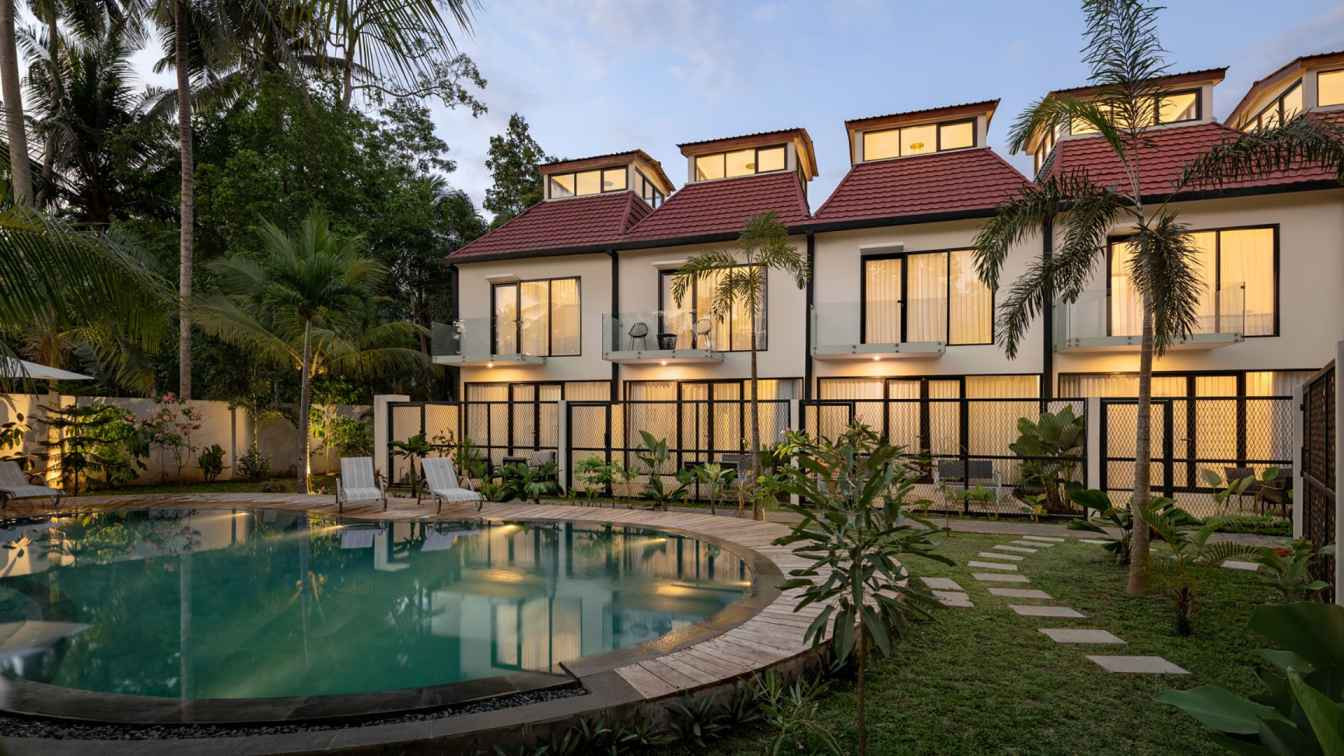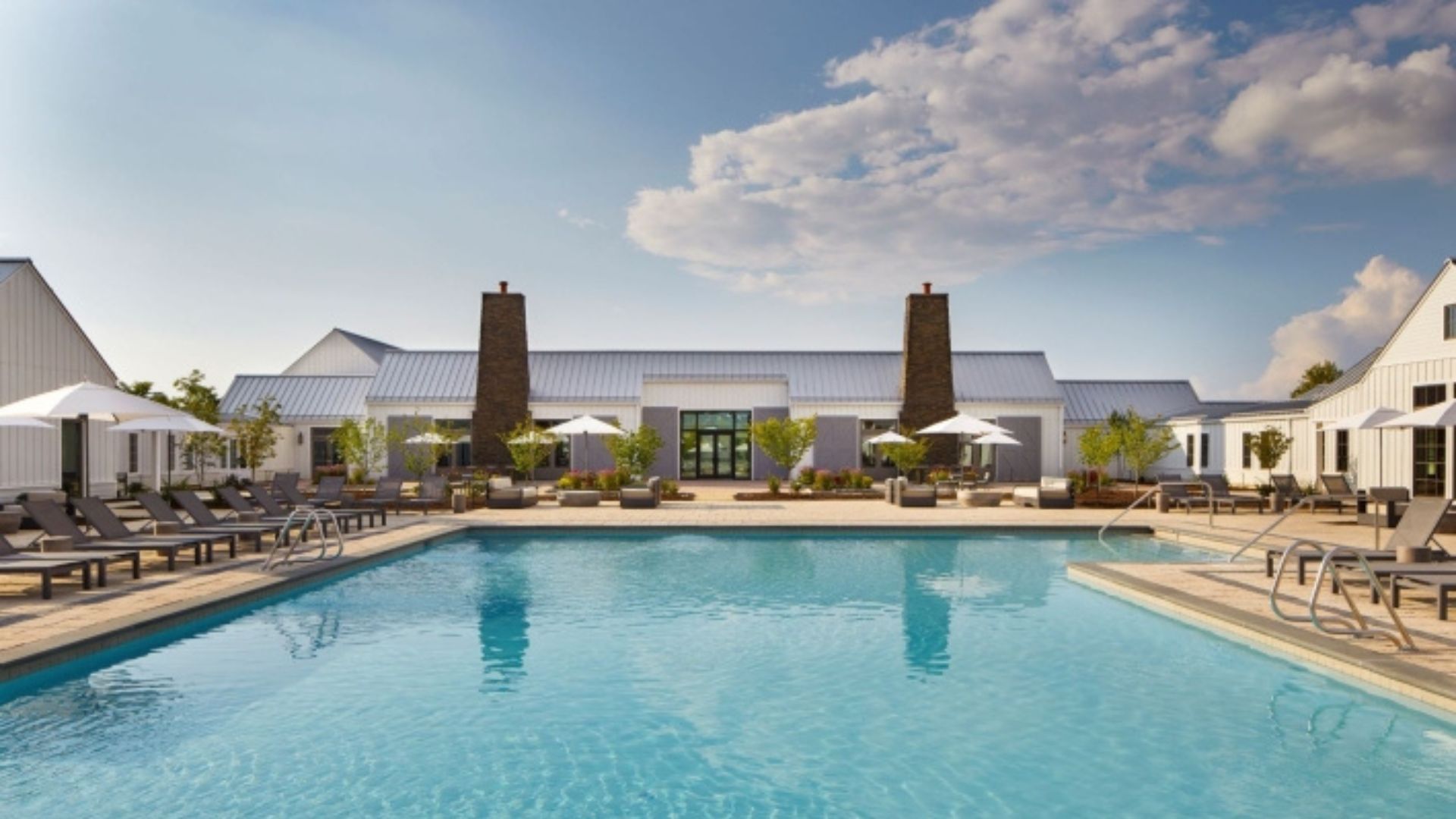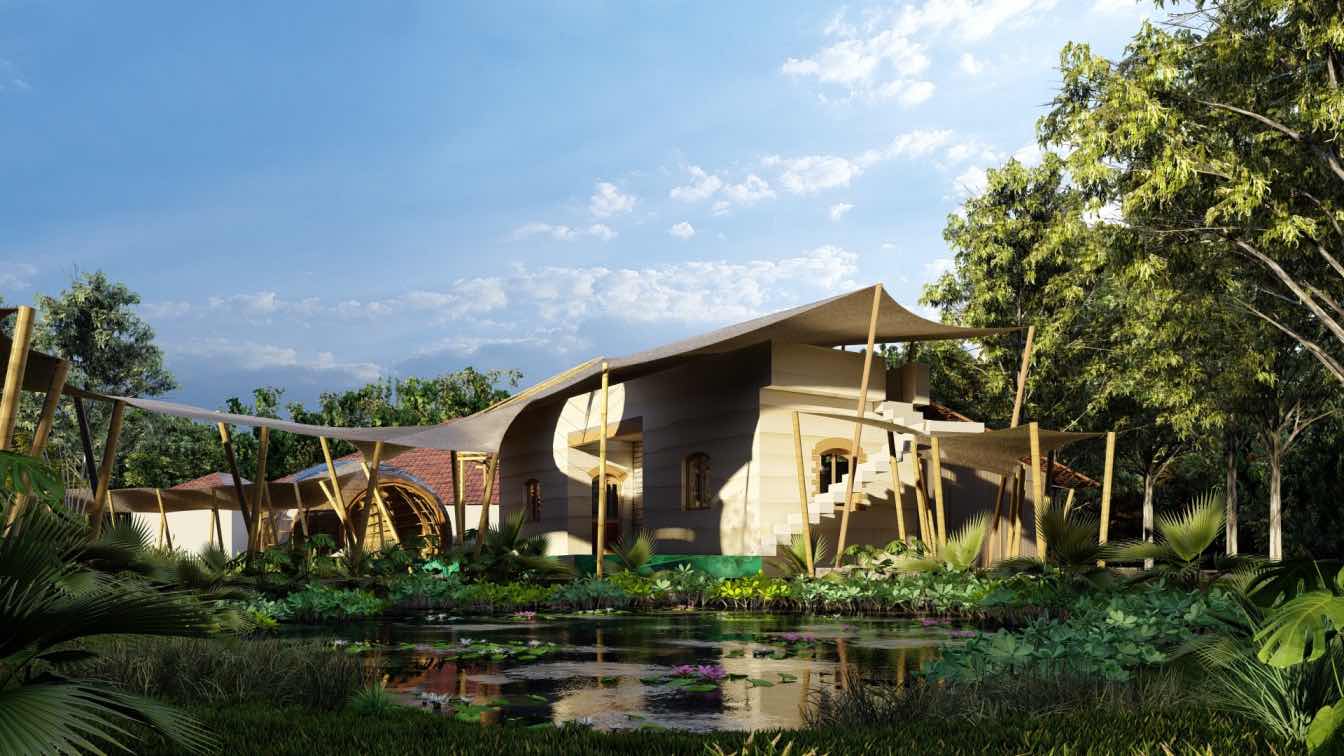An interview with young Czech architect Erik Petrus reveals his unique approach to architecture, which combines work with spatial atmosphere, geometry, and emotions. Erik is inspired by Baroque architecture and exotic cultures, especially Indonesia, where he has completed several significant projects. A chance meeting with an investor led him to design a residential complex there, launching his successful career in Asia. Erik blends his unique architectural signature and Indonesian styles, creating airy and open spaces with luxurious materials. He frequently travels between Prague and Jakarta and is considering a permanent move to Indonesia, where he finds rich opportunities and inspiration.
Erik, you are a young Czech architect with experience in both designing and realizing numerous projects not only in Europe but also in Asia. Your buildings have a strong signature style; how would you define it?
For me, the most typical work is with spatial atmosphere, geometry and emotions. I work with elevated and airy spaces, the play of light and shadow, with contrasts and moments of surprise. Each of my projects is based on a response to the specifics of the place. Because the shape, mass of the building and the interior layout itself come from a reaction to the given context of the place. Therefore, it's not possible to simply take a finished design and relocate it elsewhere.
You say that in your projects, you work with geometry. What do individual shapes represent for you?
The circle symbolizes infinity and continuity for me. Meanwhile, the square evokes stability and harmony - such spaces are suitable for static and calm functions such as the bedroom, living room. On the contrary, a rectangle is suitable for spaces that require movement. Geometry allows me to organize and structure space according to my intention.
The use of geometry as such is not new, for example, in the European environment...
You are right. I draw inspiration from baroque architecture - just look at churches or palaces, where this geometry literally comes alive, and not only during the baroque period. For me, it is important to connect history with the present.
Are you fascinated by exotic culture, you have already designed several projects in Indonesia. Could you tell us how you came to the projects in Indonesia at all?
It was a combination of several coincidences. I often travel the world with an interest in experiencing local culture, especially architecture and urbanism. As part of my passion for traveling to exotic countries, I had the opportunity to explore parts of Asia. And it was Indonesia that became decisive for me. Eight years ago, I traveled through Java, one of the most populated islands in the world, where I was fascinated by the local culture, people's behavior, and my curiosity about architecture led me to understand the basic principles of how local tropical architecture works. By coincidence, after my return to the Czech Republic, an investor approached me to design a larger residential complex with family homes in a smaller coastal town on the southern coast of Java called Pangandaran, where his wife is from.
That sounds like an ideal scenario. On what basis did the client approach you?
The client liked my interest in Asian architecture, the fact that I research the typology of different buildings, and that I personally visited Indonesia and traveled around the area where I was supposed to design the project.
How do you look back on such an interplay of coincidences?
The greatest success of this project for me was the trust from the investor, who believed in me in what I was doing from the beginning. All the houses were sold immediately after the offer was published. The investor's and residents' satisfaction with the project brought me other projects in Indonesia. Currently, I have already proposed over 10 projects in Indonesia. Of these, several projects have already been built and others are currently being built or are being prepared for implementation.
Do you transfer some of the principles that you used there to designs in the Czech Republic?
Inspiration from Indonesian culture and architecture is manifested in all my designs, especially through the use of elevated spaces and the choice of materials. When designing spaces in the Czech Republic, I often took inspiration from Indonesian traditions, which emphasize connecting the interior with the exterior and creating harmony between nature and architecture. That's why I try to create open and airy spaces that let in light and allow a smooth transition between indoor and outdoor environments.
What about working with materials?
As for the choice of materials, marble and exotic woods have an important place in my designs. Marble brings a luxurious and elegant look to the space, while exotic woods add warmth and a pleasant atmosphere. I try to integrate these materials into the design so that they emphasize the beauty of the space.
And conversely? Do you feel that you have brought Czech architectural signature to Indonesia?
I create my own architectural signature. Thus, I bring original designs to Indonesia that connect contemporary architecture with local culture and tropical climate. However, my work is not subject to the boundaries of one culture. I find inspiration in various corners of the world, absorbing the richness of cultural expressions and combining them with modern design elements. The result is a work that is unique, timeless and enlivened by a diverse palette of inspiration from around the world.
Could you tell us more about how you connect contemporary architecture with Indonesian culture?
For example, in the residential project De Residence Pangandaran, I was inspired by the traditional Javanese Joglo house. This type of house features an elevated roof, which allows the hot air to escape from the interior. I used this principle in a modern interpretation by incorporating a skylight, which not only brings light inside but also provides natural ventilation and creates a spacious, elevated interior. Another example is the musholly project, where I created a local version of Islamic architecture. Instead of a traditional minaret, I used a cylindrical elevated dome, giving the building a unique character while still respecting local traditions.
On which specific projects are you currently working?
I design buildings of various scales, from small buildings to large complexes. From interiors, family houses, larger residential projects, through commercial, cultural, civic to religious buildings. I enjoy designing different typologies of buildings, whether they are small houses or large comprehensive projects.
How does this diversity of projects and constant professional growth influence you as an architect?
For this reason, I don't focus on only one type of building. This diversity gives me the opportunity to constantly educate myself and deepen my knowledge. With each new project, I learn something new and expand my skills. Working on diverse projects around the world not only allows me to explore different cultures but also to meet new people, which I consider to be a huge enrichment.
So you travel a lot. And where do you spend most of your time now? In the Czech Republic or in Indonesia?
I often travel between Prague and Jakarta because I have many projects in both countries. So I'm always where I'm most needed at the moment. In addition, Indonesia is currently experiencing a period of significant construction boom, and I am thrilled to be right in the heart of these developments.
It's great that you found such opportunities for your work in Indonesia! Are you ever considering moving to Indonesia?
Indonesia offers an immense amount of opportunities. To be honest, work there is much easier than in Europe, especially in the Czech Republic, where we often encounter obstacles in the form of a complex permitting process. In Indonesia, I have the opportunity to create more innovative and distinctive buildings that become icons. That is why I plan to permanently move my studio to this dynamic and inspiring country.





